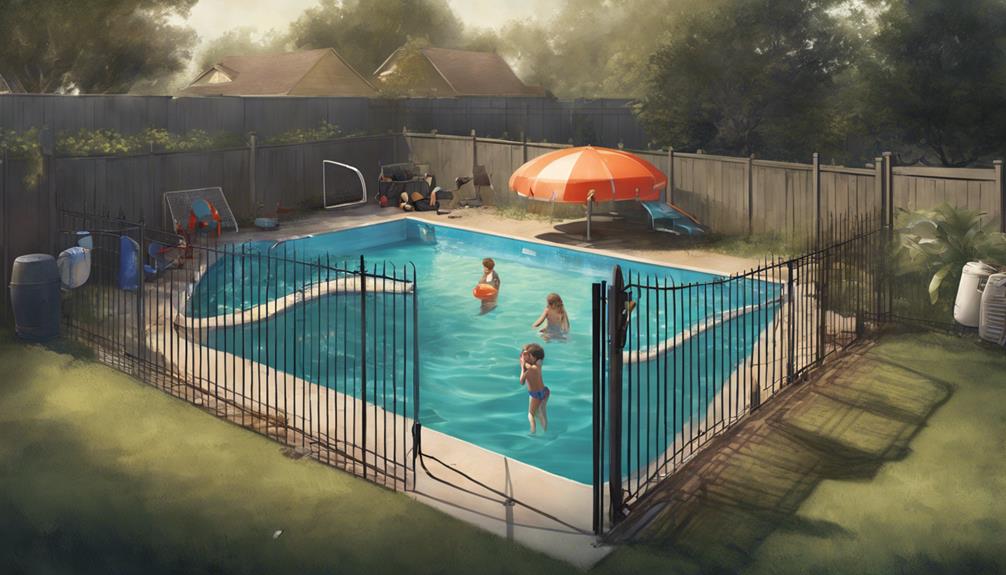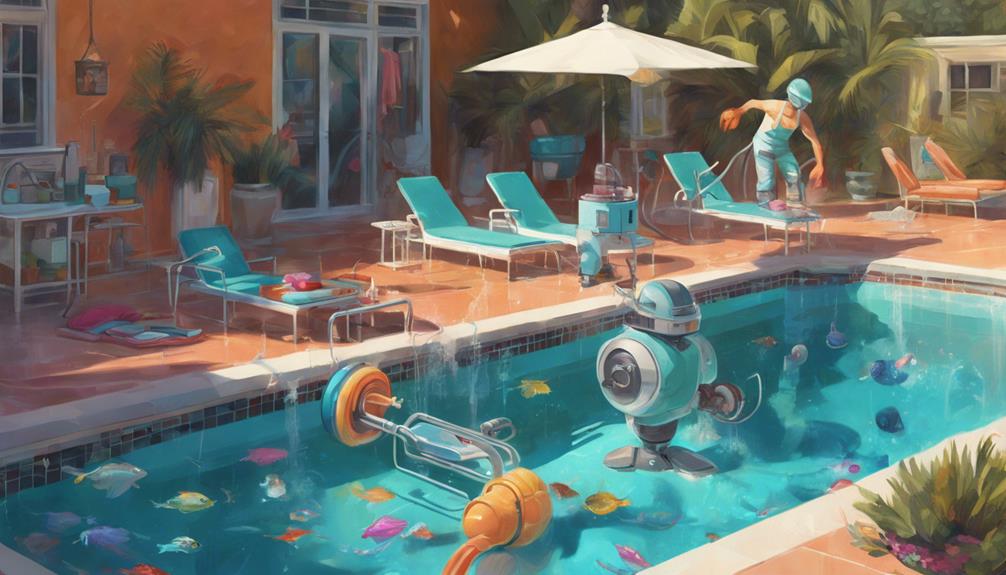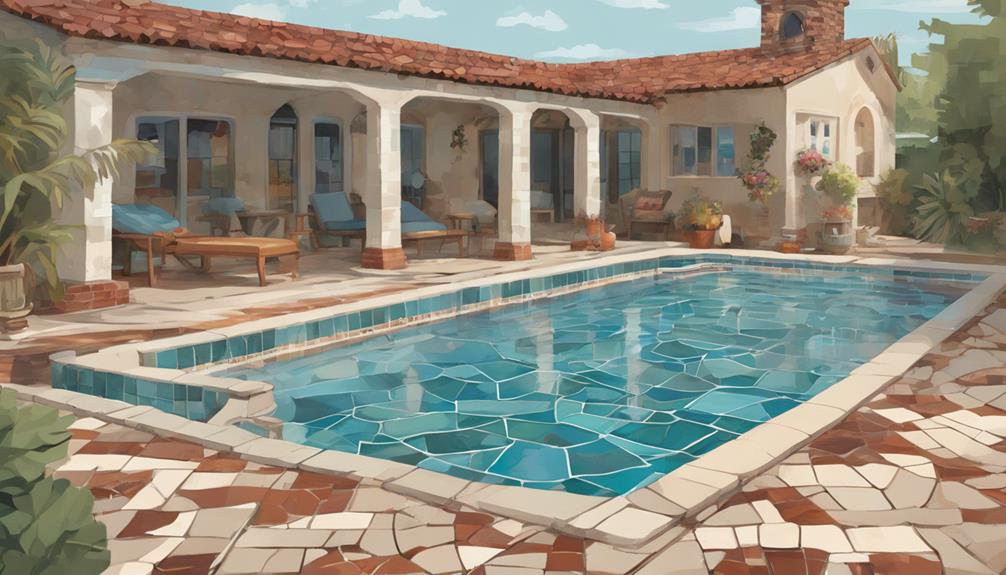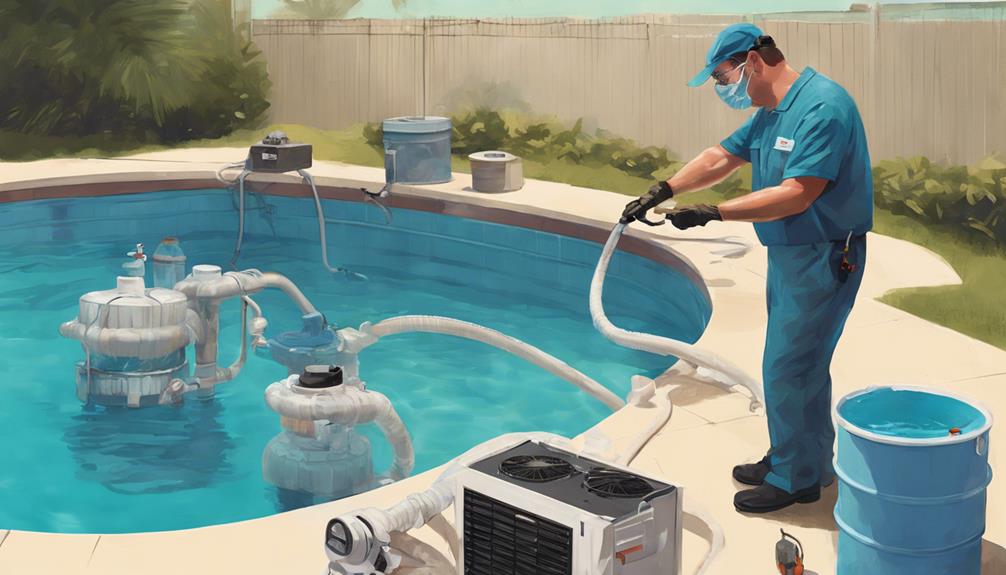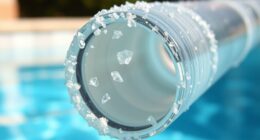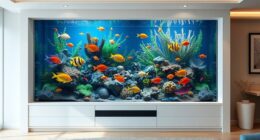Ensuring pool safety in the backyard is crucial for protecting swimmers and preventing accidents. Key components such as adult supervision, atmospheric vacuum relief systems, and barrier protection are essential. Tailored safety features like automatic covers and wall grips provide an additional layer of safety. Implementing enhancements like floating pool alarms and energy-efficient pump settings can further enhance safety. It is vital to have direct supervision, constant vigilance, and certified lifeguards in place. Adhering to safety regulations, ranging from dual drain separation to barrier protection systems, is imperative. Explore comprehensive guidelines to ensure the safety of your backyard pool and its users.
Key Takeaways
- Implement essential safety components like adult supervision and code-compliant frames.
- Consider customized features such as automatic covers and wall grips for added protection.
- Include additional enhancements like floating pool alarms and safety vacuum release systems.
- Prioritize direct supervision with certified lifeguards to prevent accidents and emergencies.
- Ensure compliance with safety regulations like dual drain separation and barrier protection systems.
Essential Pool Safety Components
When it comes to ensuring a safe pool environment, vital pool safety components are integral for preventing accidents and promoting a secure swimming experience.
These components include adult supervision to oversee activities, atmospheric vacuum relief systems to prevent suction entrapment, and code-compliant frames and grates that prevent entanglement incidents.
Dual drain separation is also pivotal to avoid suction entrapment, while barrier protection such as a code-compliant fence restricts unauthorized access to the pool area.
Customized Safety Features
Moving beyond the fundamental pool safety components, custom safety features offer additional layers of protection and convenience for pool owners and swimmers alike. These personalized enhancements cater to specific needs and preferences, enhancing the overall safety and enjoyment of the pool environment:
- Automatic Cover: Easily lock the pool when not in use.
- Wall Grips: Provide resting points in deeper water.
- Swim-out Bench Exits: Enable easy access in and out of the pool.
- Exit Signs: Highlight exit locations for added safety awareness.
These customized safety features not only elevate the level of protection but also contribute to a more user-friendly and secure swimming experience.
Additional Safety Enhancements
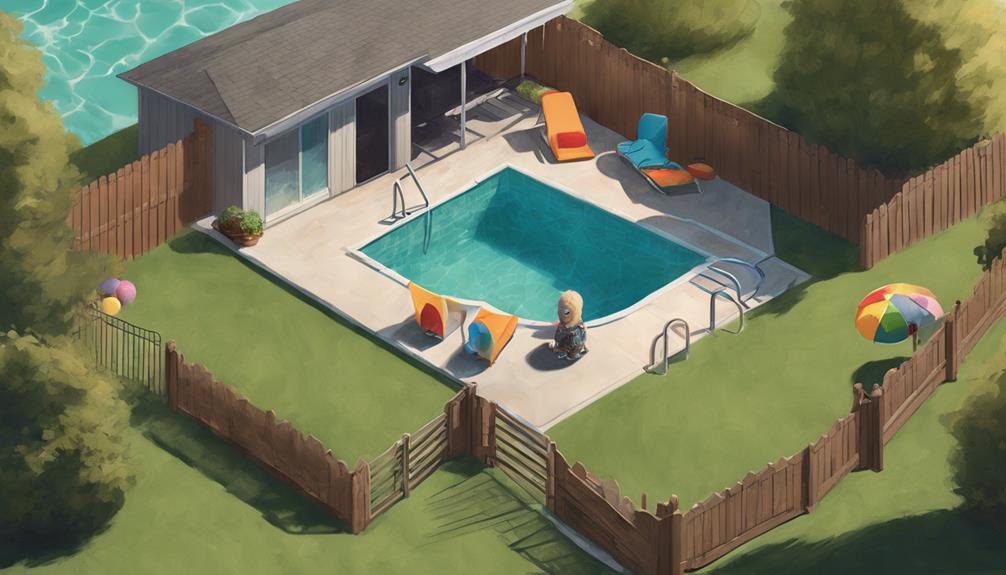
Incorporating additional safety upgrades into your pool design or renovation can further strengthen the overall safety measures in place. Adding a Floating Pool Alarm that detects pool entry provides an extra layer of security.
Safety features integrated into the pool design, such as a Safety Vacuum Release System in pumps and variable speed settings for energy efficiency, contribute to a safer environment.
Decorative accent tiles strategically placed near exit locations not only enhance the pool's aesthetics but also serve as visual cues for safe exits.
These additional safety upgrades work in conjunction with existing safety components to create a thorough pool safety system that prioritizes the well-being of all swimmers.
Importance of Direct Supervision
Emphasizing the necessity of adult supervision is paramount in ensuring a safe environment around backyard pools. Direct supervision plays a critical role in preventing accidents and ensuring swift action in case of emergencies.
Here are some key points to keep in mind:
- Constant Vigilance: A designated adult should actively monitor all pool activities.
- Certified Lifeguards: For events involving children or large gatherings, hiring a certified lifeguard is highly recommended.
- Enhanced Safety: Safety accessories are beneficial but should never replace direct adult supervision.
- Shared Responsibility: Educate all family members and guests on the importance of vigilance and adherence to pool rules.
Compliance With Safety Regulations
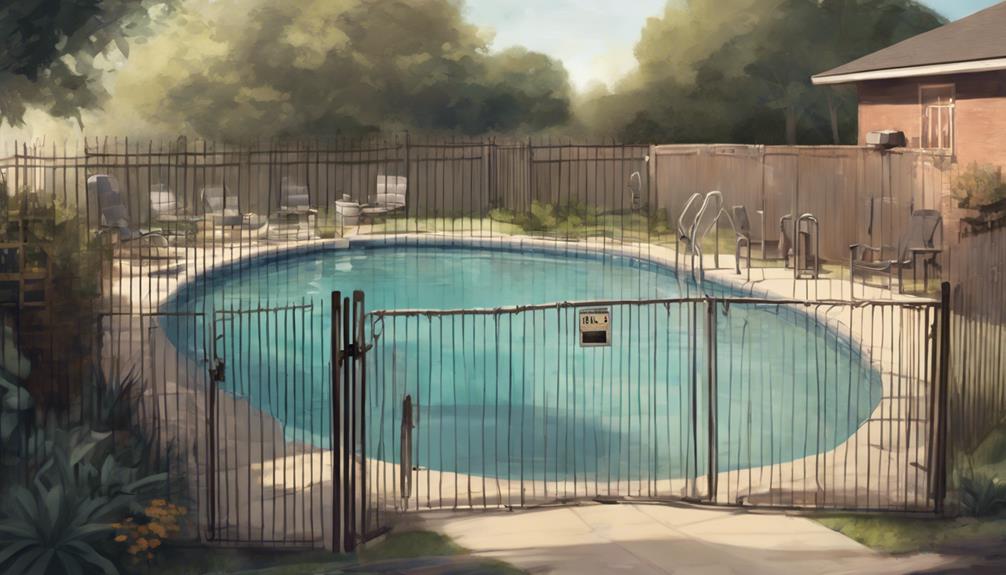
Adherence to safety regulations is essential to maintaining a secure environment around backyard pools. In states like CT and NY, laws mandate specific safety components to be in place to guarantee the well-being of individuals using the pool.
It is vital to prioritize the installation of code-compliant frames and grates to prevent entanglement incidents. Moreover, ensuring dual drain separation for pool pumps is crucial in preventing suction entrapment accidents.
Installing a barrier protection system with a code-compliant fence adds an extra layer of security by restricting unauthorized access. By complying with safety regulations, pool owners can significantly decrease the risk of accidents and create a safer environment for all individuals enjoying the pool.
Frequently Asked Questions
Can I Use a Regular Pool Cover Instead of an Automatic Cover for Safety?
While a regular pool cover provides some safety benefits, an automatic cover offers enhanced security by locking the pool when not in use. Automatic covers are recommended for maximum safety, especially when considering the protection of children and pets.
Are There Any Specific Requirements for the Color of Exit Signs?
Exit signs for pool safety should be easily visible and distinguishable in color to promote quick identification in emergencies. Red, green, or white colors are commonly used, as specified by safety regulations for clear visibility.
How Often Should the Safety Vacuum Release System Be Tested?
The safety vacuum release system should be tested at least once a month to guarantee peak functionality. Regular testing helps identify any issues promptly, maintaining a safe pool environment. Compliance with testing guidelines enhances pool safety standards.
Is It Necessary to Have Wall Grips in a Pool With a Swim-Out Bench Exit?
While wall grips provide additional safety in a pool, having them in a pool with a swim-out bench exit may not be necessary as the bench can serve as a resting point. Evaluating the specific needs and usage patterns of the pool is crucial for maximum safety.
Do I Need to Have a Pool Alarm if I Already Have a Safety Vacuum Release System?
While some may believe additional safety measures like a pool alarm are redundant with a safety vacuum release system, it's ironic that the combination actually strengthens protection. Layering safety features reinforces pool security beyond mere compliance.
How Does Rainwater Impact Backyard Pool Safety?
Rainwater impact on pool construction can affect backyard pool safety in several ways. Excess rainwater can lead to overfilling, causing potential flooding and damage to the pool’s surrounding structure. It can also dilute the pool’s chemical balance, leading to potential health and safety risks for swimmers. Regular maintenance and drainage systems can help mitigate these impacts.
Conclusion
In the tranquil oasis of a backyard pool, safety must reign supreme. With vigilant supervision, code-compliant structures, and advanced safety features, the pool transforms into a haven of enjoyment and security.
Picture a serene setting where families splash and play without fear, knowing that every measure has been taken to protect their well-being. By adhering to pool safety guidelines, the water becomes a source of joy and relaxation, free from the dangers that lurk beneath the surface.

